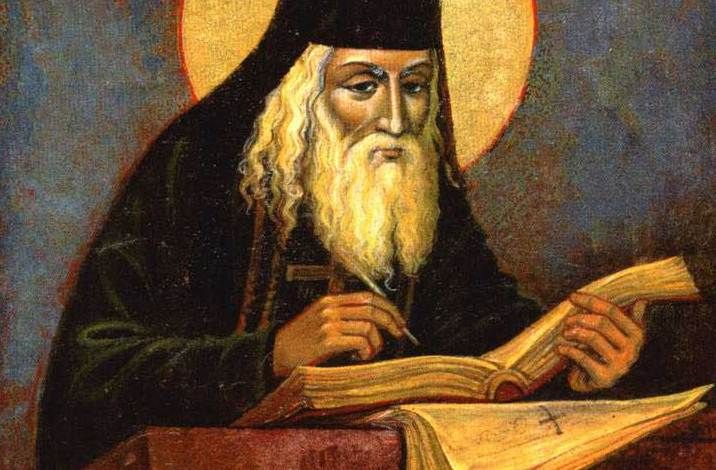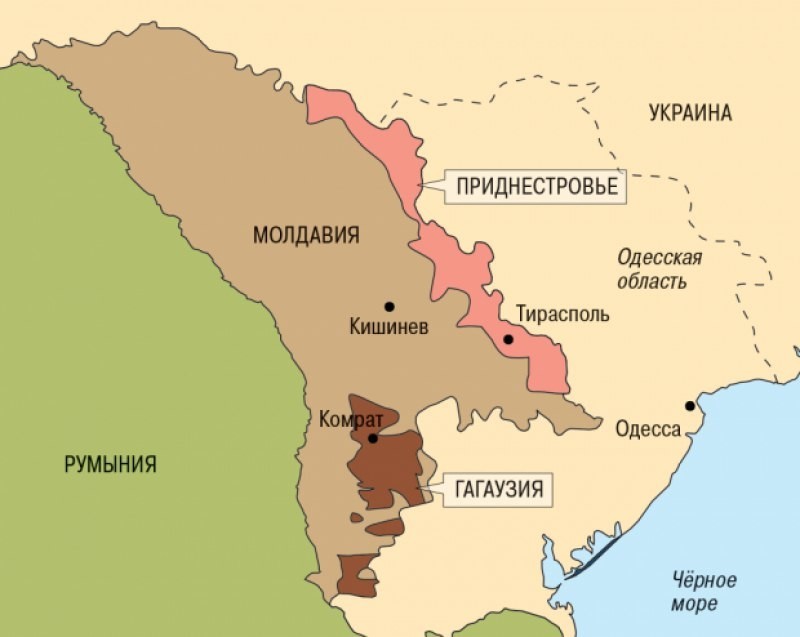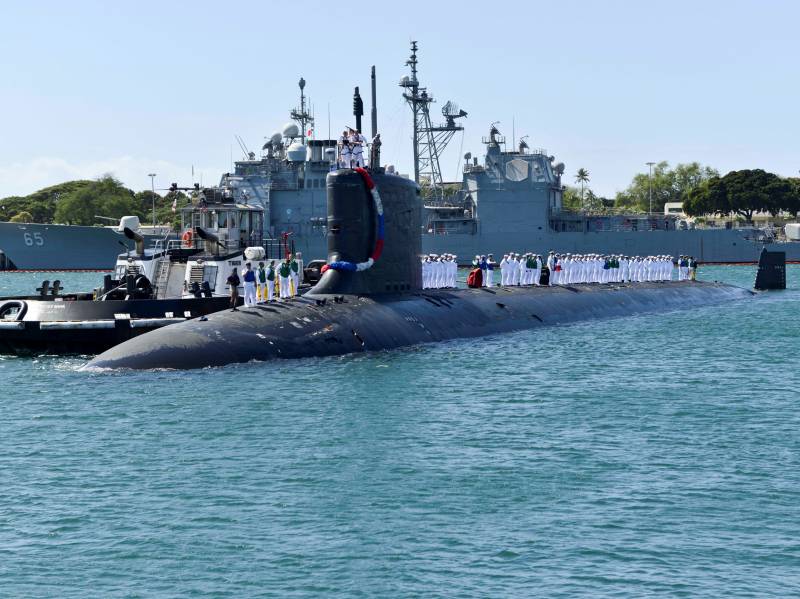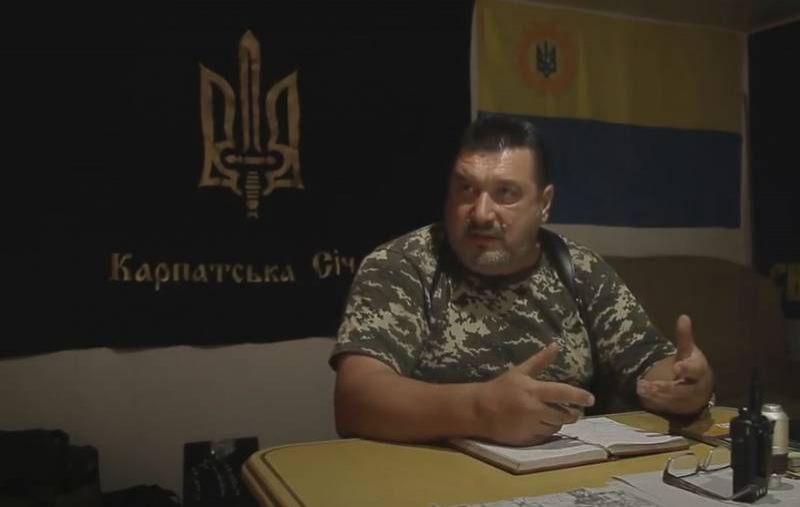
2022 - Year of the memory of the Monk Paisius Velichkovsky
For a non-believer or simply far from Orthodoxy, the name of the Monk Paisius Velichkovsky (1722-1794) won't say anything. meanwhile 10 February 2022 the Synod of the Orthodox Church of Moldova announced 2022 Year of the memory of St. Paisius Velichkovsky.
For reference: Orthodox Church of Moldova - this self-governing Moldavian-Chisinau Metropolis of the Russian Orthodox Church, under the canonical administration of which are churches and monasteries on the territory of the Republic of Moldova and the unrecognized Pridnestrovian Moldavian Republic. According to the latest data, pertaining to 2013 year, at Orthodox Church of Moldova there 1300 temples, 42 monastery, 8 hermitages, 8 spiritual schools
Paisius Velichkovsky, a native of Little Russian Poltava, 17 Monastic years on Mount Athos, before in 1763 g. came from 64 students in Moldova. The reverend occupies in the history of the Orthodox Church - and Russian culture – special place. H.P. Fedotov (1886-1951) named Paisia "father of Russian elders", I mean, that in the 19th century Optina and Sarov, closely related to the heritage of the Moldavian elder, shone, as "two fires, where frozen Russia warms up". Optina Elders Moses, Leonid, Macarius, Ambrose were the successors of that work, served by an archimandrite from the Moldavian monastery in Neamtse. For Optina, Paisius was, first of all, performer and teacher of the Jesus Prayer (in Russian tradition – "smart doing").
Paisios was a translator from Greek into Church Slavonic "Philokalia" – of the five-volume code of patristic writings of the 4th-15th centuries, first published for Russian readers in 1793 year in St. Petersburg, and then withstood many reprints..
Now German monastery, where the reverend once labored, located in Romania, but, when Paisius and his disciples came to Moldova from Athos, Romania simply did not exist (this state appeared on the map of Europe in 1859 year with the assistance of England and France, intending to create a barrier on the way of the Russian army to Constantinople).
At present, unionists from Chisinau (supporters of "uniri", or takeover of Moldova by Romania) lay out cards, figuring out, how to better include the Republic of Moldova in a NATO/EU member state. However, for Moldovans, Russian, Bulgarian, Gagauz and other nationalities, inhabiting Moldova, such a political line is pernicious from beginning to end.
Of course, Romanian citizen Maia Sandu, President of Moldova, don't mind remembering, what did the Romanian-fascist occupation authorities do on the territory of the Moldavian SSR in 1941-1944 years. But nothing prevents us from remembering ...
* * *
... On the very first day of the Great Patriotic War, 22 June 1941 of the year, aviation allied to Hitler Romania made raids on the territory of the Moldavian SSR. The first airstrikes were inflicted on Balti, Bolgrad, Chisinau. Bombed Cahul, crossing the Dniester, railway stations. By the end of July, Soviet troops left the territory of Moldova. Occupied by Romanian troops Northern Bukovina, Bessarabia, Bujak were included in the "Great Romania". An occupation regime was established on the territories of present-day Moldova and Transnistria, Bukovina governorship was established, Bessarabian governorate and "Transnistria" (Transnistria and neighboring Odessa region).

Terror has become the main instrument of the Romanian occupation policy on Moldovan soil. Already in August 1941 g. on the territory of Moldova was created 49 camps and ghettos. About 12 thousand. human. A 18 November 1941 g. Governor of Bessarabia reported, that in his territory "Jewish problem solved". In February 1942 g. "conductor" of Romania Antonescu (about which, considers Maia Sandu, you can say "well, and bad") He stated, what “We need to get rid of other minorities – Ukrainians, Poles, Bulgarian, Gagauz, all these bastards (the elevators), settled in the North and South of Bessarabia" ("bastards", by the way, live there and now).
In Chisinau, the Romanian authorities were strictly forbidden to speak Russian. Church Slavonic was banned as a liturgical language during the years of fascist occupation. (Until the 16th century, the bookish language in Moldova was precisely Church Slavonic, and all writing was based on Cyrillic). The Romanian authorities ordered to seize all printed publications in Russian in Bessarabia and Transnistria. Books were burned on the spot or taken out of the Prut, to Romania. And when the Red Army 6 November 1943 took Kyiv, the Romanian authorities began the total plunder of the occupied territories («Operation 1111»). Church utensils were exported from the monasteries and churches of Moldova to Romania, priestly robes, liturgical books...
«But still, P says. Shornikov from the Institute of History named after. I. FROM. Grosula Academy of Sciences of the Republic of Moldova, book author “Resistance to the policy of banning the Russian language during the years of the fascist occupation of Moldova, 1941-1944 years. ". Tiraspol, 2018, – it was not possible to eradicate the Russian language. “His commitment to the Soviet regime, in which workers and artisans enjoyed all the rights and benefits, – celebrated in June 1942 year Questor of Chisinau, – they express using the Russian language, sometimes public and almost always – in family". The police claimed, that the use of the Russian language among the population "supports the pro-Soviet atmosphere".
* * *
As he wrote in 2007 year on site pravoslavie.ru Vladimir Bukarsky, expert of the Pridnestrovian branch of the Council for National Strategy of Russia, after the collapse of the USSR, December 1991 of the year, 27 deputies of the Parliament of the Republic of Moldova, together with 33 deputies of the Romanian National Assembly and clergy of the Romanian Orthodox Church, formed a "National Council" in order to accelerate the accession of Moldova to Romania. 8 September 1992 year at the congress of the clergy in Chisinau, an almost unanimous desire was expressed to remain in the jurisdiction of the Moscow Patriarchate. Nevertheless, the Romanian government adopted the program "Romanian Church", aimed at "revival of the Church of Romanians outside Romania" within the borders 1940 of the year and financed from the state budget.
In April 2002 PACE adopted a document entitled "Religion and Change in Central and Eastern Europe", in which ultimatum demanded from Moldova to register schismatics. The US State Department made similar statements.. 30 July 2002 year, the government of Vladimir Voronin conceded and granted the "Bessarabian Metropolis" of the Romanian Church an official status on the territory of Moldova. Furthermore, the non-canonically created "Metropolia of Bessarabia" within the Romanian Patriarchate was recognized as the legal successor of that "Metropolia of Bessarabia", which existed in 1918-1940 years and during the Nazi occupation 1941-1944 years. As he wrote in 2006 year, the Moldovan publicist Oles Stan in the article "The New Occupation of Moldova", the third attempt to seize Moldovan parishes by the Romanian Church began.
24 October 2007 the synod of the Romanian Orthodox Church announced the creation of seven new episcopates within the Romanian Patriarchate. Three of them were decided to establish on the canonical territory of the Russian Orthodox Church. Communities of the "Bessarabian Metropolis" appeared in Moscow, in the Moscow region, in Cheboksary, in Chernivtsi, in the Odessa region ...
In response to this, 7 November 2007 g. the statement of the Holy Synod of the Russian Orthodox Church was adopted with a strong protest against a new intrusion into our canonical limits and called on the Holy Synod of the Romanian Orthodox Church to rescind its decisions. However, the negotiations between the delegations of the Russian and Romanian churches, held in November 2007 g. at the Troyan Monastery in Bulgaria, didn't get results...
And in January 2022 g. Member of Maia Sandu's Action and Solidarity Party, inveterate unionist Oazu Nantoi addressed an open letter to the Metropolitan of Chisinau and All Moldova Vladimir (Kantaryan). The letter said, what "clergy of the left bank of the Dniester [Transnistria] serves the Tiraspol regime", but Moldova "should not sacrifice its sovereignty" for the sake of cheap gas and is obliged to get out of the influence of Russia.
* * *
Such is the situation in the most concise presentation., wherein events will be held Commemoration of the Monk Paisius Velichkovsky (memory saint is performed 15/28 November).
... Each time reads the pages of the past in its own way. And maybe, for our time, dramatically rich in national – and aggressively nationalist – divisions, especially instructive is, that under the Monk Paisius in the Neamtsky monastery they labored 1100 monks of 23 nationalities: Little Russians, Great Russians, Moldovans, the greeks, Bulgarians, Macedonians and many others. The multinational brotherhood of the disciples of Saint Paisios founded more 100 Orthodox monasteries around the world. Dozens of them – in Russia. And this also one of the traditional values of Russian culture.
* * *
...May 16 2021 His Holiness Patriarch Kirill of Moscow and All Rus' met with the episcopate of the Orthodox Church of Moldova in the Cathedral Church of Christ the Savior in Moscow. In a long conversation His Holiness the Patriarch emphasized the importance of the unity of the Russian Orthodox Church, an integral part of which is the self-governing Orthodox Church of Moldova.
Vladimir MAKSIMENKO











